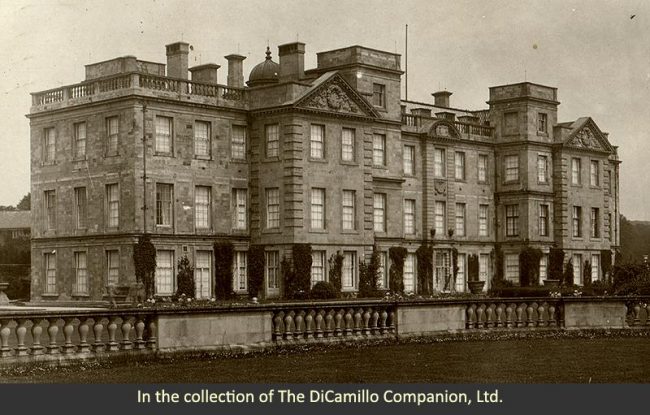
The south facade from a 1916 postcard
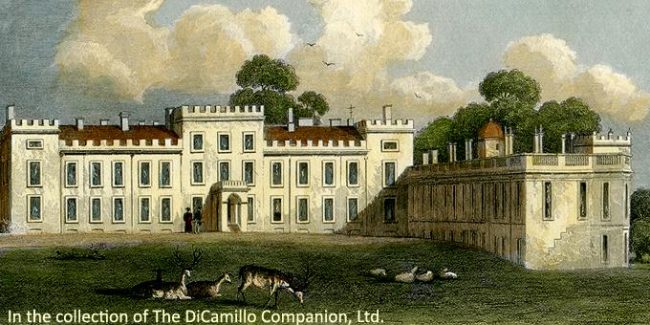
An 1829 steel engraved print of the house from "Jones' Views of the Seats"
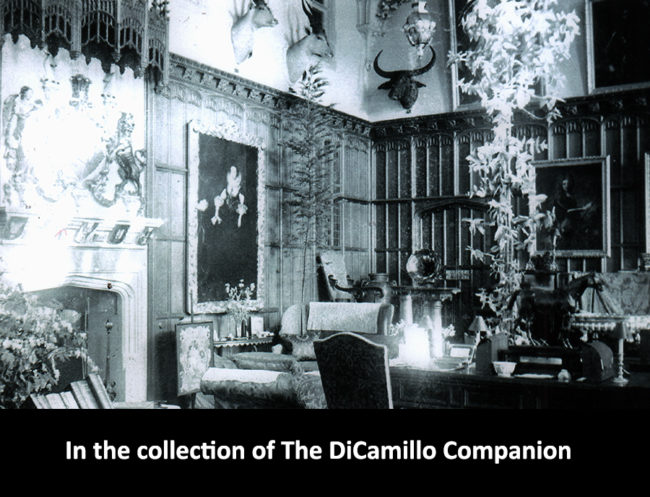
The Gothic Hall from a circa 1898 postcard
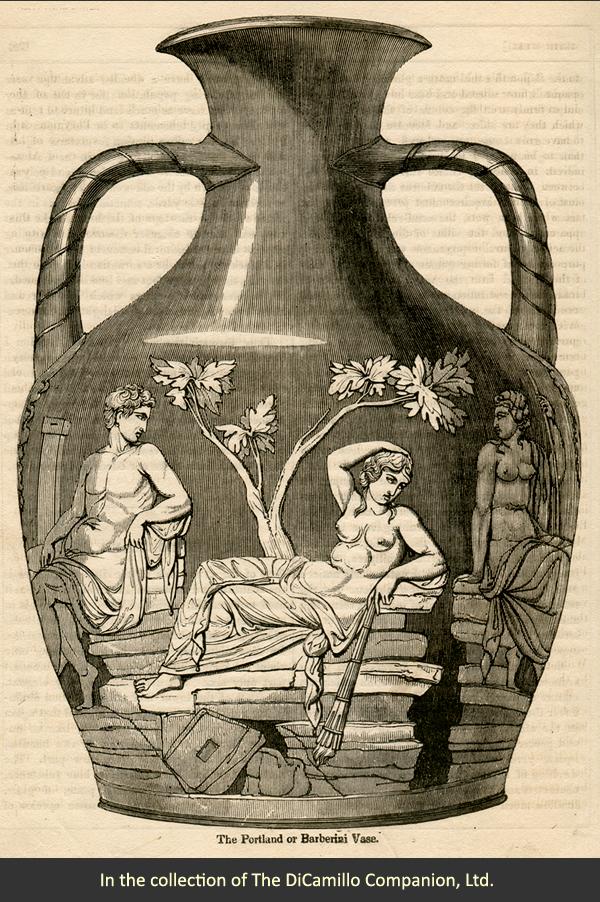
The Portland Vase from an 1860 publication
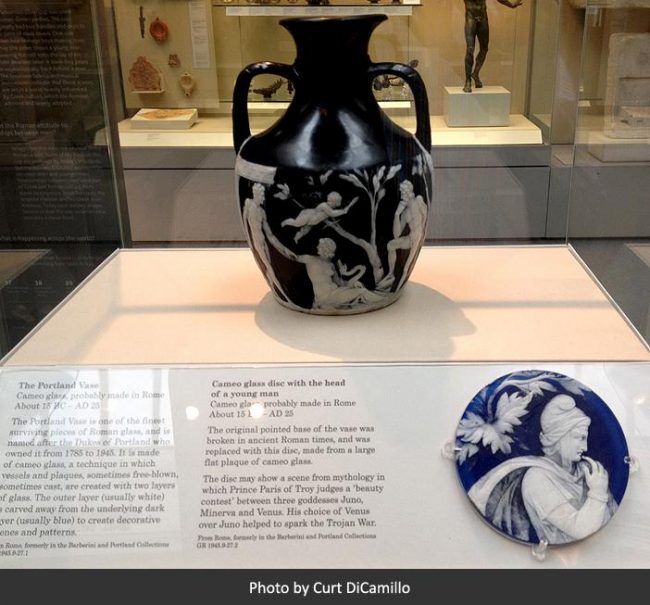
The Portland Vase in the British Museum today
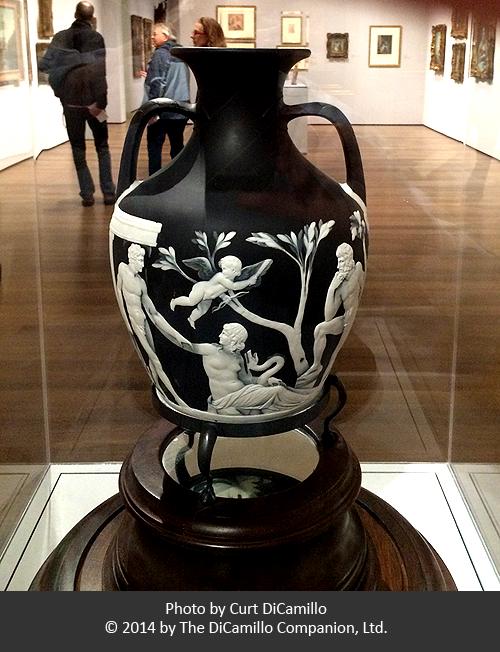
A circa 1795 Wedgwood Jasperware Portland Vase, No. 9 of the first edition, today in the collection of the Harvard Art Museum.
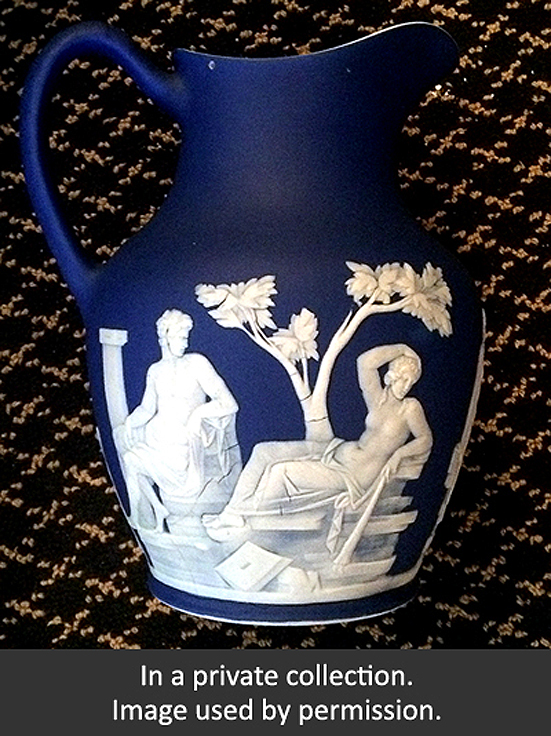
The Portland Vase, as reproduced on a late 19th century Wedgwood pitcher.
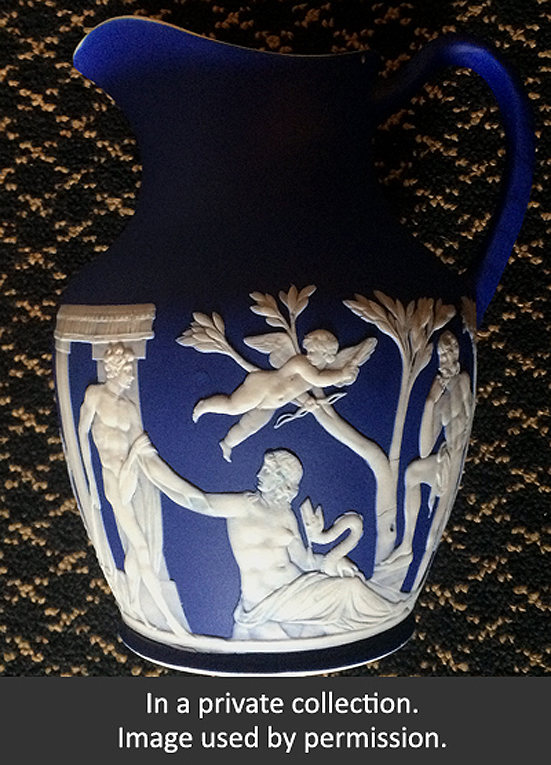
The Portland Vase, as reproduced on a late 19th century Wedgwood pitcher.
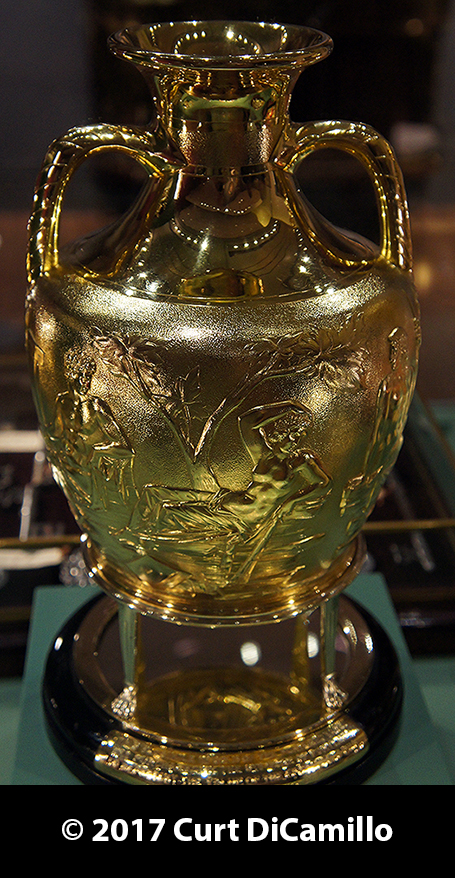
20-karat solid gold version of the Portland Vase, 1880s. In the collection of Welbeck Abbey.
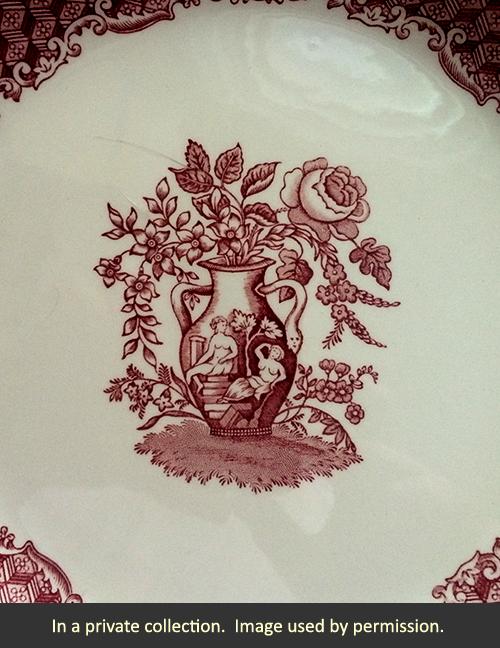
The Portland Vase on a circa 1832 Spode dinner plate
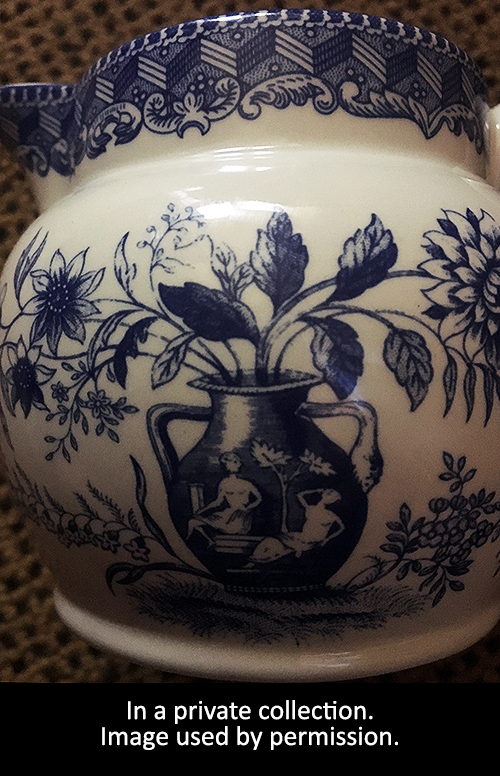
The Portland Vase on a blue and white Spode creamer
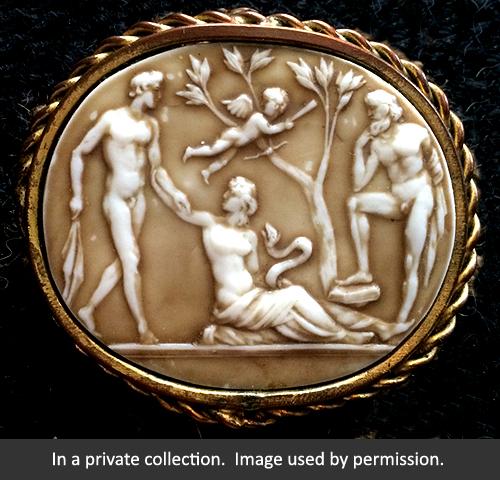
Scene from the Portland Vase on a 1930s bakelite brooch
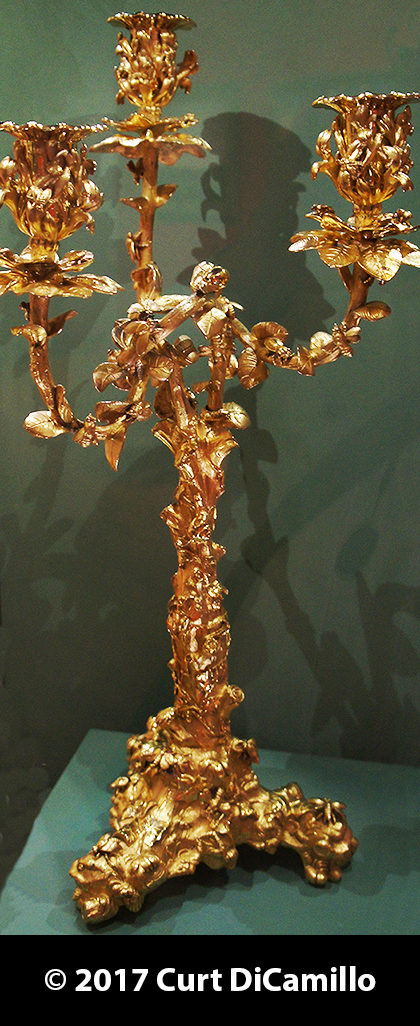
Vermeil candelabrum, William or John Cafe, London, 1756. This is one of a set of four commissioned by Margaret, Duchess of Portland. In the collection of Welbeck Abbey.
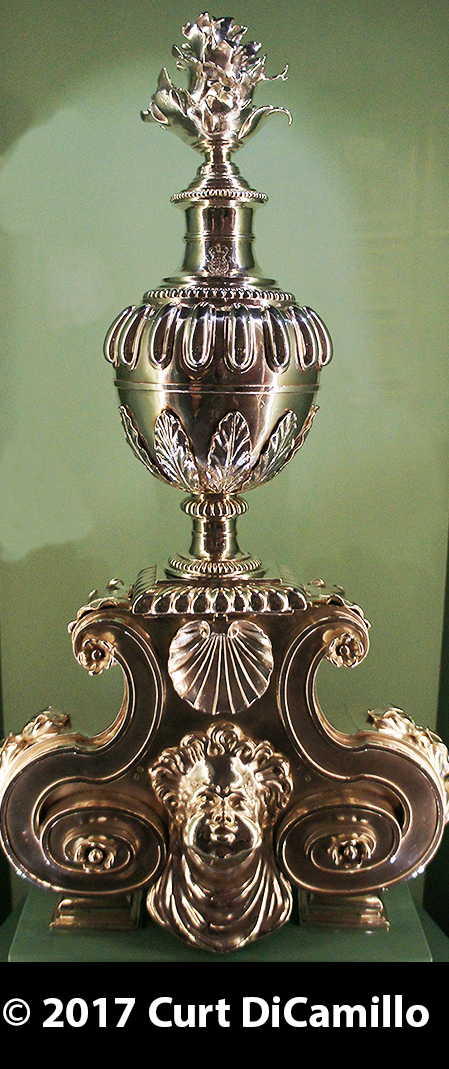
Silver firedog, Philip Rollos, London, 1704. In the collection of Welbeck Abbey.
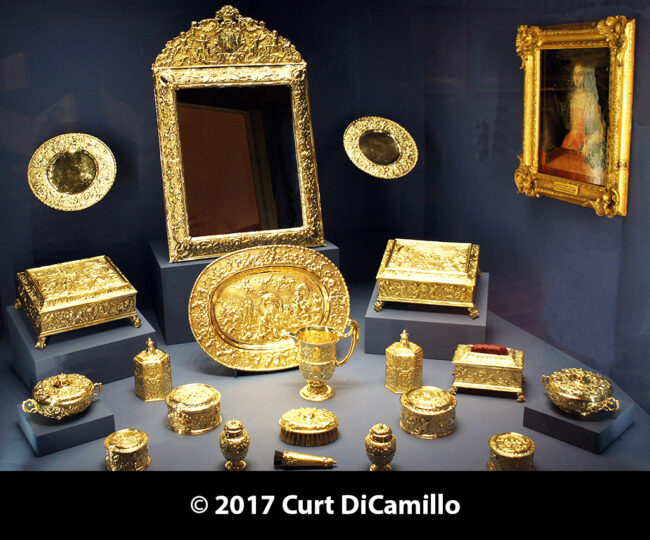
Vermeil toilet service of the duchess of Portland. In the collection of Welbeck Abbey.
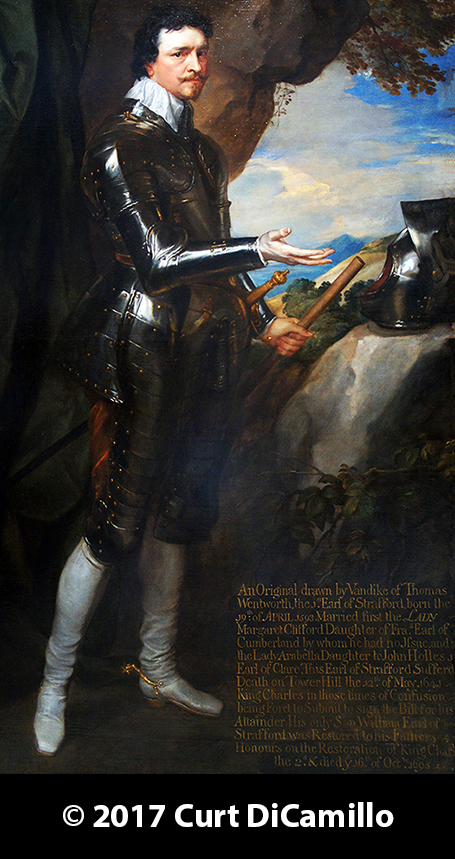
Thomas Wentworth, 1st Earl of Strafford, van Dyck, circa 1636. In the collection of Welbeck Abbey.
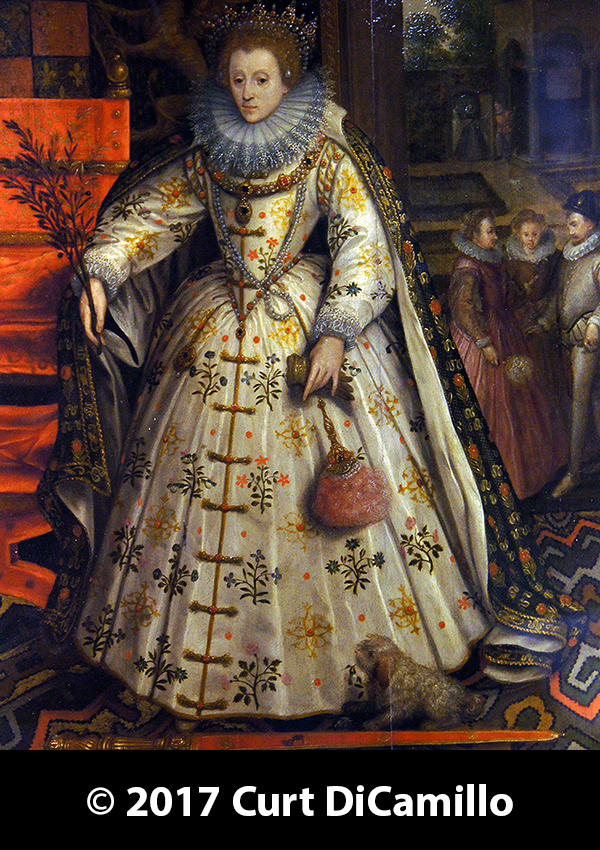
Queen Elizabeth I, Marcus Gheeraerts the Elder, circa 1578. In the collection of Welbeck Abbey.
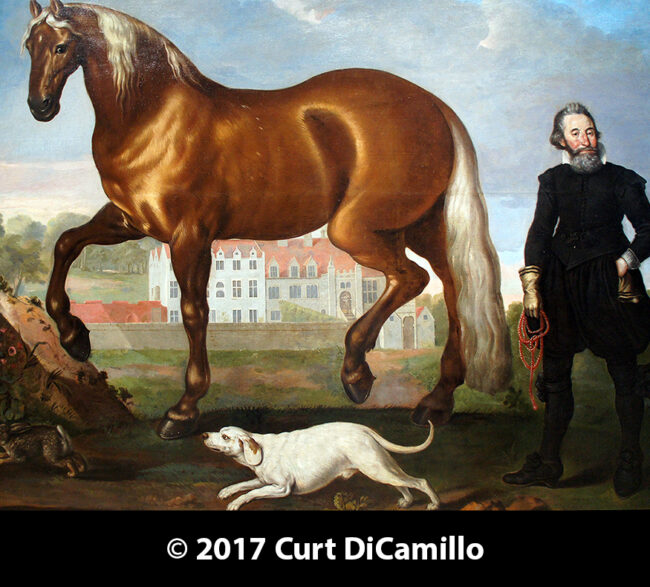
"Horse and Groom in Front of Welbeck," artist unknown, circa 1630. This is one of a set of 12 horse paintings commissioned by the 1st Duke of Newcastle. In the collection of Welbeck Abbey.
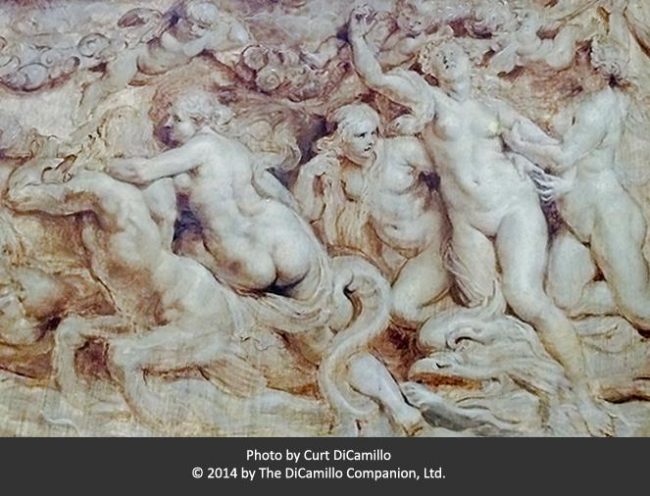
A Rubens grisaille sketch, formerly in the collection at Welbeck, for "The Triumph of Venus," today in the collection of the Fitzwilliam Museum, Cambridge.
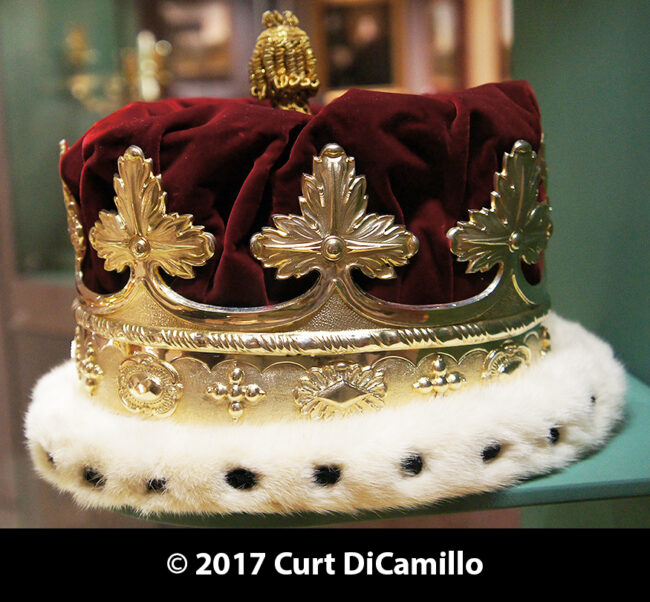
Coronet of the dukes of Portland. In the collection of Welbeck Abbey.
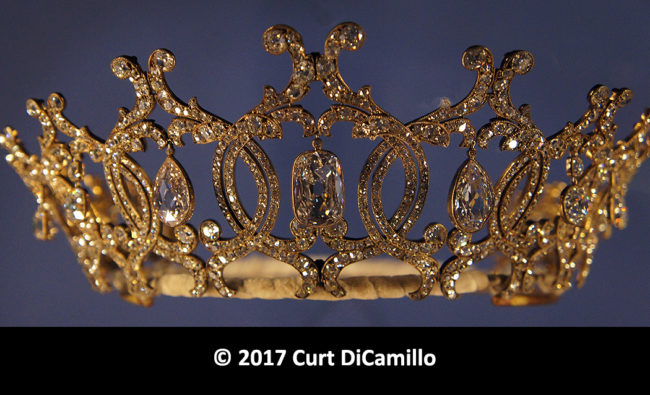
The Portland Tiara, Cartier, 1902. Formerly in the collection of Welbeck Abbey; stolen from there in 2018.
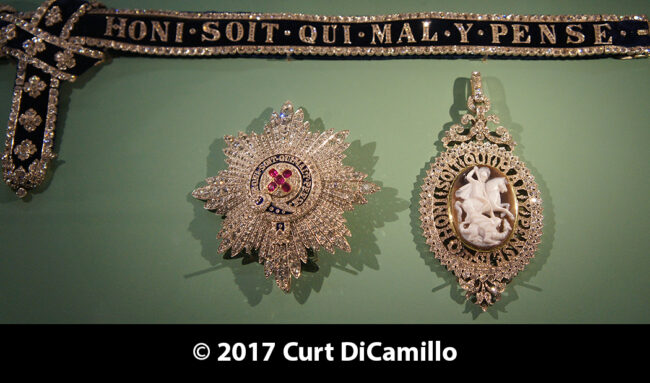
Garter (top), Garter Star (left), and Great George (right) of the dukes of Portland. In the collection of Welbeck Abbey.
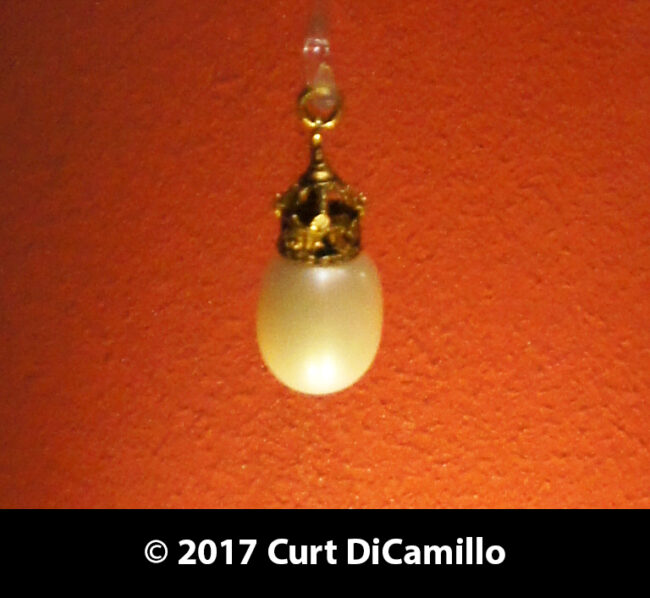
The pearl earring that Charles I wore at his execution. In the collection of Welbeck Abbey.
Earlier Houses: Today's house occupies the site of an abbey of Premonstratensian canons, founded in 1140 by Thomas de Cuckney and dedicated to St. James.
House & Family History: When Henry VIII dissolved the monasteries, the Premonstratensian abbey at Welbeck was seized by the crown and later granted to Richard Whalley of Screveton. After the Whalleys decamped, the Welbeck Estate passed through a number of owners until it came to settle in the ownership of Sir Charles Cavendish, youngest son of the Countess of Shrewsbury (the famous Bess of Hardwick). Sir Charles entertained James I at Welbeck and was subsequently raised to the peerage as baron Cavendish and earl of Newcastle. In August of 1619 the Prince of Wales, later King Charles I, paid an extended visit to the earl at Welbeck. During the Civil War the earl was commander-in-chief of the royalist forces north of the Trent and served his monarch well. In 1642 Queen Henrietta Maria (Charles I's wife) arrived at Welbeck with arms and ammunition; the earl made sure the queen was safely transported to the king at Oxford. At the Restoration Charles II raised the earl to the dukedom of Newcastle. The 1st Duke of Newcastle's great granddaughter married the 2nd Earl of Oxford; in 1734 this couple's only daughter married William Bentinck, 2nd Duke of Portland, thus bringing the Welbeck Estate into the family in whose ownership it remains today. Welbeck Abbey is famous primarily because of the eccentric 5th Duke of Portland, who, in the 19th century, built three miles of tunnels under the house, in addition to the construction of many estate buildings; in total, the 5th Duke spent nearly £1 million (approximately £77 million in 2016 values using the real price commodity index) on his building campaigns at Welbeck; he could, however, afford it. The duke had, at £200,000 (equivalent to approximately £17 million today), one of the largest annual incomes in England. He was apparently so shy that he communicated with his servants through a letterbox, so as to avoid having to see them face-to-face. In addition to the tunnels (one of which exited near a rail line, thus enabling the duke to take his carriage from an underground tunnel directly to his private rail car, and thence to London), the duke also built a number of underground rooms, including the famous 160-foot-long ballroom, occupied by the British Army college, formally called Welbeck College, when they occupied part of the house. To prevent the penetration of moisture into the underground rooms the walls were constructed of an exceptional thickness and then covered with asphalt. To run his huge estate the 5th Duke employed over 1,000 staff, many of whom worked on the construction of the tunnels and the underground rooms. In 1997 the 5th Duke was the subject of a fictional novel, "The Underground Man," by Mick Jackson. Under the terms of the 5th Duke's father's will, should the 5th Duke die childless (which is exactly what happened), the Portland Estates were to be divided between the 5th Duke's male heir (William Cavendish-Bentinck, who would become the 6th Duke), and the 5th Duke's two surviving sisters. The 6th Duke thus inherited the Welbeck Estate and many of the surrounding estates, as well as Bolsover Castle, while his aunt, Lady Ossington, inherited the Scottish Caithness Estate, and his other aunt, Lady Howard de Walden, inherited the Marylebone Estate in London, in whose family's ownership it remains today. The 6th Duke, upon inheriting, set about making major improvements to the house; he engaged the architect John Dando Sedding to transform the former Riding School into a new chapel and a library; these were then linked to the house by a great curved corridor. The chapel is a tour-de-force, called "one of the finest and most complete country house chapels of the late-Victorian era" by Pete Smith, writing in "The Edwardian Great House." The Titchfield Library features an inglenook fireplace carved by F.W. Pomeroy of local alabaster. The 6th Duke initiated the cataloging of the books in the library, in addition to the huge job of cataloging the contents of the house. As a result of these endeavors, during the 1890s a series of privately printed books were published documenting the collections. The first was James Garrard's catalog of the silver plate at the abbey, published in 1893. In 1894 Charles Fairfax-Murray published a catalog of the pictures at the great house, and, in 1897, G.R. and H.W. Harding came out with a published catalog of the furniture and porcelain at Welbeck. One of the results of this great push of documenting the collections at the abbey was that the 6th Duke gave permission for the Royal Commission of Historical Manuscripts to begin the enormous task of cataloging the archives at Welbeck Abbey. This project eventually led to the publication, post-World War I, of a series of histories of Welbeck Abbey. The enormous Print Corridor (divided into offices by Welbeck College during their occupation) contained part of the huge collection of prints in the Portland Collection. In the fall of 1900 a fire swept through part of the abbey, gutting the Oxford Wing and causing an estimated £50,000 in damage. The 6th Duke hired Sir Ernest George to make repairs after the fire and to alter other rooms in the abbey. Sir Ernest glassed-in the porte-cochere and introduced new brass inner doors by J. Starkie Gardener. Designed in the Jacobean Revival style and fitted with thick beveled glass, the doors are still stunning today. The 5th Duke's great underground works were not complete at his death, with the result that the 6th Duke inherited, to the west of the underground ballroom, an area (300 by 250 feet) that had already been excavated for the planned underground Bachelors’ Wing. The 6th Duke instead had Sir Ernest George design a large garden pavilion, sunk 15 feet below the surrounding park, complete with a half-moon-shaped swimming pool and tennis courts. The 6th Duke was grand master of the Nottinghamshire Masonic Lodge and allowed meetings of the lodge to be held in the famous underground ballroom. The 6th Duke was master of the horse to both Queen Victoria and Edward VII and entertained on a grand scale; he was famous for the house parties he held at Welbeck for the Prince of Wales (later Edward VII); he also entertained the kings of Belgium, Siam, Spain, and Portugal at the abbey. During the 6th Duke's time the household staff numbered 300 and included a man whose only job was to clean the housemaids' bicycles. The Cavendish-Bentinck family historically derived a large portion of their wealth from the very lucrative Marylebone Estate, the great swath of London they owned that comprises the land between Oxford Street and Regent's Park, including Harley Street and Portland Place. In addition to the London properties, the family had 11 coal mines on the Welbeck Estate, which also provided a substantial income. These coal mines were nationalized after World War II and were closed by the Coal Board in the late 20th century. The Red Drawing Room (formerly the saloon) is noted for its Gobelins tapestries, woven in 1783 and only discovered in the late 19th/early 20th century by Lady Bolsover in a tin trunk that had remained unopened for almost 100 years. The plaster ceiling of the Gothick Hall is considered one of the greatest creations of the Gothick style. The entrance hall contains a fireplace carved by Thomas Carter that is dated 1744 and was inspired by the fireplace in the Star Chamber at Bolsover Castle. During World War II the British Army moved into Welbeck; in 1954 a sixth-form army college (Welbeck College) was started here and remained at Welbeck until 2005. As of the early 21st century the Welbeck Estate covers 16,000 acres and employs approximately 110 people. In addition, a family charitable organization, The Harley Foundation, encourages and supports exceptional craftwork in traditional methods, and operates public museums on the estate. The family still live on the estate in a house called Welbeck Woodhouse and within Welbeck Abbey itself. Lady Ottoline Morrell, née Cavendish-Bentinck, famous member of the Bloomsbury Group, grew up at Welbeck.
Collections: The exceptionally famous Portland Vase, named after the dukes of Portland, is today in the collection of the British Museum, London. Most scholars believe the Roman vase was made about the time of the birth of Christ, during the reign of the Emperor Augustus (27 BC-14 AD). The vase is considered the most beautiful cameo glass vessel surviving from antiquity. It is made of dark blue-purple glass surrounded with a single, continuous white, glass cameo depicting seven figures, the cutting of which was very likely performed by a skilled gem cutter. Modern scholars estimate it took no less than two years to produce the vase. Though the circumstances of its modern discovery cannot be proved, it appears that the vase was discovered circa 1582 by Fabrizio Lazzaro in the sepulcher of the Emperor Alexander Severus at Monte del Grano, near Rome. The first written reference to the vase occurs in a 1601 letter from the French scholar Nicolas Claude Fabri de Peiresc to Peter Paul Rubens, in which it is recorded as being in the collection of Cardinal Francesco Maria Del Monte in Italy. It later entered the collection of the acquisitive Barberini family (the Barberini Vase, as it was then known, was the prized possession of Maffeo Barberini, later Pope Urban VIII [1623-44]) and remained with them until sold in the late 18th century. James Byres (1733-1817), a Scottish art dealer known as "the Pope's antiquary" (Byres settled in Rome in 1758 and conducted business from his house in Via Paolina), acquired the vase after it was sold by Donna Cornelia Barberini-Colonna, Princess of Palestrina. Byres sold the vase in 1778 to Sir William Hamilton (1730-1803), British ambassador in Naples, who brought it to England on his next leave (after the death of his first wife, Catherine). With the assistance of his niece, Mary, Sir William arranged a private sale (for approximately £2,000, equivalent to approximately £216,000 in 2012 values, using the commodity index) to Margaret Cavendish Holles-Harley (1715-85), widow of William Bentinck, 2nd Duke of Portland. The vase was but one of many pieces of art and curiosities in the collection of the Duchess of Portland, whose collection was collectively called "The Duchess of Portland's Museum." The collection was enormously rich in natural history, but also included books, pictures, busts, coins, medals, miniatures, jewels, and china. After her death in 1785 the duchess's collection was auctioned on April 24, 1786 by Skinner and Co. The auction was a huge event, no less because of the inclusion in it of the famous vase, but it was more than just the vase that brought notoriety to the collection and the auction. W.S. (Lefty) Lewis, founder of the Lewis Walpole Library at Yale University, said of the Duchess: “Few men have equaled Margaret Cavendish Holles Harley, Duchess of Portland, in the mania of collecting, and perhaps no woman. In an age of great collectors, she rivaled the greatest. She is best known as having supplanted with her own name the famous Barberini-Hamilton vase…"). Her son, the 3rd Duke (1738-1809), purchased the vase at auction for £1,029 and placed it on temporary loan to the British Museum (it was at this point that the vase acquired its current name). In 1810 the 4th Duke (1768-1854) placed the vase on permanent loan with the British Museum. The 3rd Duke also lent the vase to Josiah Wedgwood, who devoted considerable time and energy in duplicating it in Jasperware with applied white reliefs (he did not achieve an acceptable replica until 1790 and considered the reproduction of the Portland Vase the culmination of his career). Wedgwood's success in replicating the vase led to an enormous increase in the vase's notoriety, taking it, for the first time, out of the realm of the well-informed cognoscenti and into the upper middle classes. Ironically, today early versions of Wedgwood's Portland Vase are quite valuable and found in the collections of many museums around the world (the first to enter an American collection, No. 9 of the first edition, is today in the collection of the Harvard Art Museum—see photo in "Images" section). In 1791 the naturalist Erasmus Darwin (he and Josiah Wedgwood were good friends, and both were grandfathers of Charles Darwin) published an epic poem entitled "The Botanic Garden" that contains a section inspired by scenes on the Portland Vase. The vase has been on view in the British Museum since 1810, apart from three years (1929-32) when William Cavendish-Bentinck, 6th Duke of Portland, attempted to sell it. The vase was put up for auction at Christie's in 1929; however, it failed to reach its reserve of 29,000 guineas (£30,450) and remained in the ownership of the dukes of Portland until purchased from William Cavendish-Bentinck, 7th Duke of Portland, in 1945 for £5,000. The Portland Vase makes an appearance in fiction, being mentioned as having been rescued by time travelers from the future just before the destruction of the earth in Arthur C. Clarke's 1951 science fiction short story, "All the Time in the World." A Rubens grisaille sketch for "The Triumph of Venus," today in the collection of the Fitzwilliam Museum, Cambridge (see "Images" section), was in the collection of the dukes of Portland at both Welbeck and Bulstrode Park. The Welbeck Estate maintains The Harley Gallery in Welbeck village, a public art gallery built in 1994 within the ruins of the Victorian gasworks. The collection features one of the largest privately-owned collections of British portraits, as well as collections of fine and decorative arts amassed over the centuries by the dukes of Portland. There are masterpieces such as Michelangelo's "Madonna del Silenzio," a rarely seen van Dyck painting of Thomas Wentworth, Earl of Strafford, George Stubbs's painting of the 3rd Duke of Portland on horseback outside the stables at Welbeck, and the pearl earring worn by Charles I at his execution in 1649. The 1902 Cartier Portland Tiara (see "Images" section) was stolen from the Harley Gallery in 2018.
Comments: Pete Smith, writing in "The Edwardian Great House," states that "The 6th Duke commissioned Ernest George & Alfred Yates to remodel the exterior of Welbeck Abbey, transforming it from a vast dull Victorian pile into a memorable and distinguished Edwardian great house."
Garden & Outbuildings: The Terrace Garden outside the Oxford Wing was laid out by Alfred Parsons and has, at its center, a large fountain designed and cast by Alphonse Legros. In 2015 the Welbeck Estate comprised approximately 16,000 acres.
Chapel & Church: The chapel in the house is a tour-de-force, called "one of the finest and most complete country house chapels of the late-Victorian era" by Pete Smith, writing in "The Edwardian Great House." It has a pulpit of yellow marble, black-and-white checkered marble floors, enormous pink-gray marble columns, and a colored marble altar rail. The piece-de-resistance, however, are the solid bronze doors depicting scenes from the life of Christ in low relief. The doors are copied after those of the Baptistery of the Duomo in Florence and were designed by Henry Wilson and cast by F.W. Pomeroy. The chapel is arranged in the fashion of an 18th century church and sports full-height columns supporting a barrel vault plaster ceiling. Pete Smith calls the atmosphere "almost Byzantine." The 6th Duke's final architectural addition to the Welbeck Estate was a new church—St. Winifred, in the village of Holbeck. It was begun in 1913 and finished in 1916 to the designs of the architect Louis Ambler and was inspired by the Norman church at Steetley in Derbyshire.
Architect: John James
Date: 1742-46Architect: John James
Date: 1747-51Architect: John Dando Sedding
Date: 1891-96Architect: Ernest George
Date: Early 20th centuryArchitect: Ernest George
Date: 1908Architect: Louis Ambler
Date: 1904-16Architect: John Carr
Date: 1763-77John Bernard (J.B.) Burke, published under the title of A Visitation of the Seats and Arms of the Noblemen and Gentlemen of Great Britain and Ireland, among other titles: 2.S. Vol. I, p. 201, 1854.
John Preston (J.P.) Neale, published under the title of Views of the Seats of Noblemen and Gentlemen in England, Wales, Scotland, and Ireland, among other titles: Vol. III, 1820.
Country Life: XIX, 558, 1906. LXXIV, 346 [Repton Notebooks], 1933.
Title: Biographical Dictionary of British Architects, 1600-1840, A - HARDBACK
Author: Colvin, Howard
Year Published: 2008
Reference: pg. 568
Publisher: New Haven: Yale University Press
ISBN: 9780300125085
Book Type: Hardback
Title: Portland Vase, The (British Museum Objects in Focus)
Author: Walker, Susan
Year Published: 2004
Reference: pgs. 7, 21-24, 27
Publisher: London: The British Museum Press
ISBN: 0714150223
Book Type: Softback
Title: Duchess of Portland's Museum, The
Author: Walpole, Horace; Lewis, W.S. (Introduction)
Year Published: 1936
Reference: pgs. v, vi
Publisher: New York: The Grolier Club
ISBN: NA
Book Type: Hardback
Title: Edwardian Great House, The
Author: Airs, Malcom (Editor)
Year Published: 2000
Reference: pgs. 77-79, 81-92
Publisher: Oxford: Oxford University
ISBN: 0903736306
Book Type: Softback
Title: Bess of Hardwick: Empire Builder
Author: Lovell, Mary S.
Year Published: 2006
Reference: pg. 490
Publisher: New York: W.W. Norton & Company
ISBN: 039306221X
Book Type: Hardback
Title: National Geographic (magazine)
Author: NA
Year Published: NA
Reference: Nov 1985, pg. 689
Publisher: Washington, DC: National Geographic Society
ISBN: 00279358
Book Type: Magazine
Title: Walford's County Families of the United Kingdom, 1914
Author: NA
Year Published: 1914
Reference: pg. 978
Publisher: London: Spottiswoode & Co.
ISBN: NA
Book Type: Hardback
Title: Biographical Dictionary of British Architects, 1600-1840, A - SOFTBACK
Author: Colvin, Howard
Year Published: 1995
Reference: pgs. 222, 952
Publisher: New Haven: Yale University Press
ISBN: 0300072074
Book Type: Softback
Title: Debrett's Peerage and Baronetage, 1990
Author: Kidd, Charles; Williamson, David (Editors)
Year Published: 1990
Reference: pg. P 987
Publisher: London: Debrett's Peerage Limited (New York: St. Martin's Press, Inc.)
ISBN: 0312046405
Book Type: Hardback
Title: English Country House From the Archives of Country Life, 1897-1939, The
Author: Hall, Michael
Year Published: 1994
Publisher: London: Mitchell Beazley
ISBN: 1857325303
Book Type: Hardback
Title: Disintegration of a Heritage: Country Houses and their Collections, 1979-1992, The
Author: Sayer, Michael
Year Published: 1993
Publisher: Norfolk: Michael Russell (Publishing)
ISBN: 0859551970
Book Type: Hardback
House Listed: Grade I
Park Listed: Grade II
Current Seat / Home of: William Parente; Cavendish-Bentinck family here since 1607.
Past Seat / Home of: Richard Whalley, 16th century. Sir Charles Cavendish, 17th century; William Cavendish, 1st Duke of Newcastle-upon-Tyne (first creation), until 1676; Henry Cavendish, 2nd Duke of Newcastle-upon-Tyne, 1676-91. John Holles, 1st Duke of Newcastle-upon-Tyne (second creation) and 4th Earl of Clare, until 1711. Thomas Pelham-Holles, 1st Duke of Newcastle-upon-Tyne (third creation) and 1st Duke of Newcastle-under-Lyne, until 1768. Henrietta, Countess of Oxford, 18th century. William Cavendish-Scott-Bentinck, 5th Duke of Portland, 1824-79; William John Arthur Charles James Cavendish-Bentinck, 6th Duke of Portland, 1879-1943; William Arthur Henry Cavendish-Bentinck, 7th Duke of Portland, 1943-77.
Current Ownership Type: Individual / Family Trust
Primary Current Ownership Use: Private Home
Ownership Details: The house is closed for visits; the Harley Gallery is open to the public. Owned by Welbeck Estates.
House Open to Public: No Access to House - Grounds Open to Public
Phone: 01909-501-700
Email: [email protected]
Website: https://harleyfoundation.org.uk/
Historic Houses Member: No